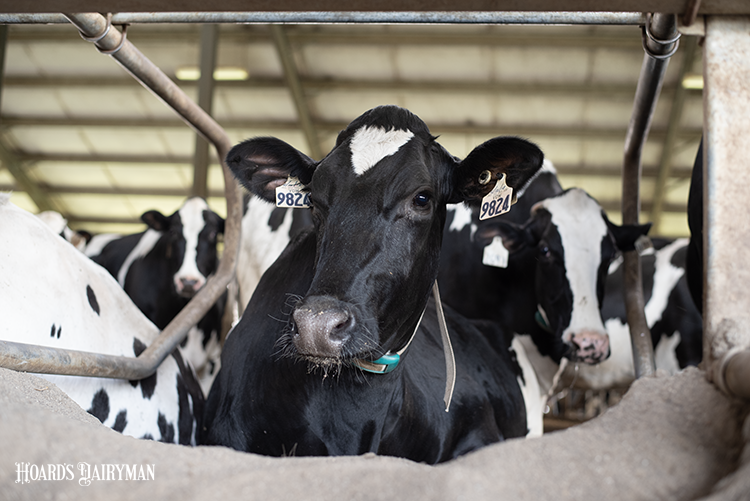
Each farm seems to have its own sweet spot when it comes to the number of cows they house per group. While some dairies can overcrowd successfully, others struggle to maintain individual cow performance when a pen is overstocked.
For Dale Brown, a partner at Jobo Holstein Farm near Gettysburg, Pa., overstocking their freestall barns was an answer for their lack of profitability. He explained his experience during a “Cow-Side Conversations” podcast hosted by the Center for Dairy Excellence.
At their dairy, they milk 1,050 cows and farm about 910 acres. About five years ago, they found themselves struggling to make the farm cash flow. They made some cuts to feed costs and started milking more cows. Brown, who once felt cow performance suffered when they got much over 900 cows in their freestall barns, discovered that overstocking actually helped them become more profitable.
Overall, the cows are about 16% overstocked in their six-row freestall barns. Some groups may be 20% or more overstocked to allow the fresh cow pens to be at 80% to 90% capacity.
Labor needs did not climb with these additional cows, and there were just a few elevated expenses, including feed per cow and utility costs to cool the milk. What these extra cows did, though, was improve the farm’s financial situation, and Brown said they have been profitable ever since.
Provide plenty of feed
When asked what helps them be successful with overstocking, Brown said, “The biggest thing we had to learn to do was overfeed the cows.” He said they now feed for 5 to 10 pounds as fed weigh backs per cow for most groups. “Before we did that, we would have trouble with thin cows in groups. After we started overfeeding, those problems disappeared,” he explained. The weigh backs are fed to their heifers.
Once the cows adapted to the new stocking rate, production per cow only went up, and reproduction improved, Brown said. And once the farm became more profitable, Brown said they could spend money in other areas, such as packing silage better and buying more fertilizer to improve crop yields. “Overcrowding seemed to domino into more successful aspects of the operation,” he noted. Today, their herd is averaging close to 90 pounds per cow.
Brown shared a few keys that make overcrowding work for them. The first is overfeeding the cows. “Make sure you are feeding for significant refusals,” he advised.
To maintain comfortable stalls, they add bedding three times a week and groom the stalls several times a week. They also have grooved concrete.
Lastly, Brown also recommended only overcrowding certain groups. “Don’t crowd your prefresh cows, and don’t crowd your postfresh cows,” he said. “Also, I don’t think you can crowd your heifers, either.”








